SJW fatigue: Why anime & manga are conquering the West
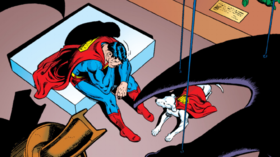

Be it films or comics, audiences seem to be growing tired of what the Western entertainment industry has to offer and many are turning their attention to the East.
For a long time, Hollywood and the American comic book industry have been seen as international media behemoths. It used to be that they never even faced any serious competition. But lately, they seem to be losing that grasp. The last decade of film and comics has seen a sharp decline in quality. And while, of course, there have been some HUGE successes like Marvel’s MCU films, raking in billions of dollars, nevertheless, it seems evident that audiences are growing tired of the same old formulas being rehashed over and over again.
Viewership for Marvel films since ‘Avengers: Endgame’ has been going downhill, and American comic sales are a far cry from what they used to be. Meanwhile, Japanese anime and manga and Korean dramas have seen a huge spike in popularity among Western audiences in recent years. But what exactly is so attractive about the Eastern entertainment industry, that Hollywood and American comics can’t seem to grasp?
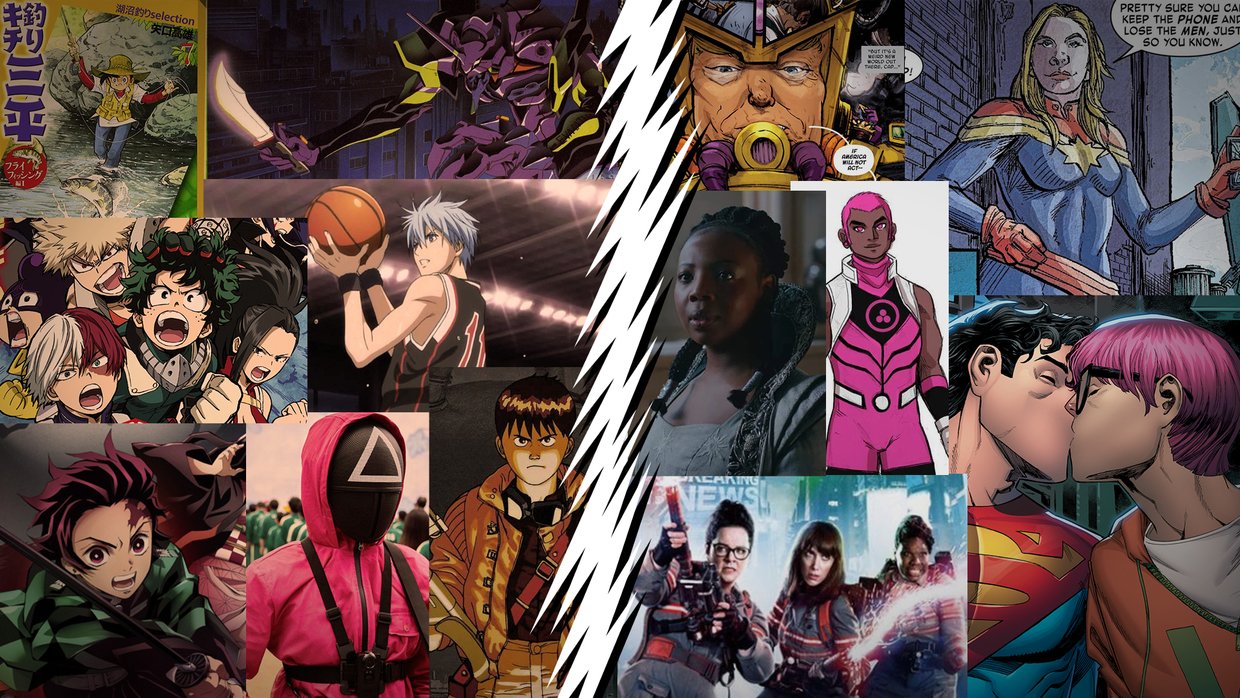
Comics aren’t what they used to be
If you’re looking for American comics, there’s mainly only two publishers producing them – Marvel and DC, which account for about 80% of the comic book market. Both companies have been around since the 1930s and have grown into giant corporations that completely dominate the industry. With numerous wildly successful superhero series, both companies have also ventured into other forms of media and have proven to be extremely successful. But while pumping out numerous films, TV shows, games etc, it seems their core product – comics – has seen a dramatic dip in quality, readership, and profitability. New issues are predominantly received as stale, repetitive, outdated, and overwhelmingly hyper-politicized. Many fans and veterans of the industry feel that modern comic book writers have seemingly abandoned the basics of what made the medium successful in the first place – creative and engaging storylines, memorable, unique, and relatable characters, and stunning artwork. Instead, new releases focus on the same old superhero tropes, infused with heavy-handed political messaging and offering little to no variety.
Chuck Dixon, known for his extensive work on Marvel’s ‘Punisher’ and DC’s ‘Batman’ comics in the 1990s and early 2000s, thinks it’s no surprise that manga is “wiping the floor” with American comics.
“It’s not hard to see. The artwork is attractive. It’s different. It’s engaging. It’s interesting. It’s varied. So there’s a lot of reasons to like manga. And not a whole lot of reasons to like what’s out now,” he said in response to a fan question on YouTube. “Because what’s out now, for the Big Two [Marvel and DC], is, for the most part, poorly crafted. There’s a few exceptions, but for the most part, it’s poorly crafted, poorly conceived, there’s an obvious political agenda to everything, and there’s no variety.”
“It’s superheroes, superheroes, superheroes. And they are all avatars for the writer’s political agenda. And they’re kind of tiresome. They’re not particularly well-drawn. They’re not particularly well-realized.”
However, criticism isn’t something that the American comic book giants seem to appreciate these days, and most gripes with modern comics are often disregarded as coming from hateful bigots who don’t know better. As a result, longtime comic book fans have become alienated from their beloved franchises and turn elsewhere for fulfilling entertainment, leading many to manga.
Manga offers something for everybody
Manga is essentially just an umbrella term for comic strips and graphic novels originally created in Japan. Unlike American comics, they are mostly drawn in black and white and series are published on a chapter-by-chapter basis in special monthly or weekly magazines, such as ‘Weekly Shonen Jump’, which has been running since the 1960s and has featured such renowned manga series as ‘One Piece’, ‘Dragon Ball’, ‘Naruto’ and countless more.
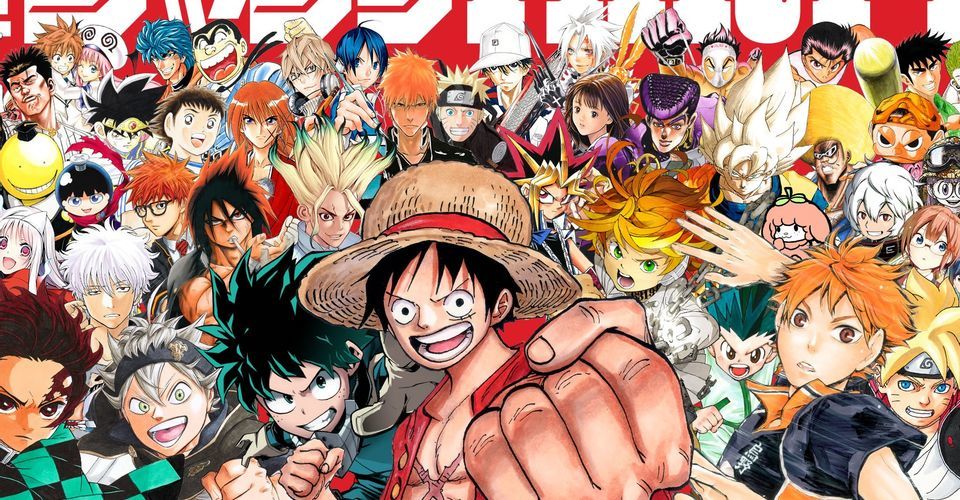
The stories are generally told in a straightforward linear fashion, allowing readers to jump into a new series fairly easily and follow it from beginning to end. In Western comics, it’s a bit more complicated, as many of the characters have been around for decades and have gone through numerous major overhauls and re-boots and have been featured in numerous side stories, spin-offs, crossovers, and other ‘non-canon’ works, which can be confusing for newcomers.
Perhaps the biggest difference from American comics, most of which are published by DC and Marvel and typically focus on superheroes, is that manga is produced by countless artists (known as mangaka) and released by numerous publishers ranging from huge conglomerates to small independent print houses. This results in a wide variety of visual styles, but, more importantly, provides works in literally every genre, subgenre, and subject matter imaginable.
Of course, there’s a lot of series about people with superhuman abilities, but there’s also an endless amount of manga exploring genres such as comedy, drama, horror, sci-fi, romance, erotica, fantasy, etc. There are also numerous series about things like fishing, hunting, golf, racing, ballet, gaming, music, sports, science, psychology, business, law, politics, crime, war, biographies, history… the list goes on.
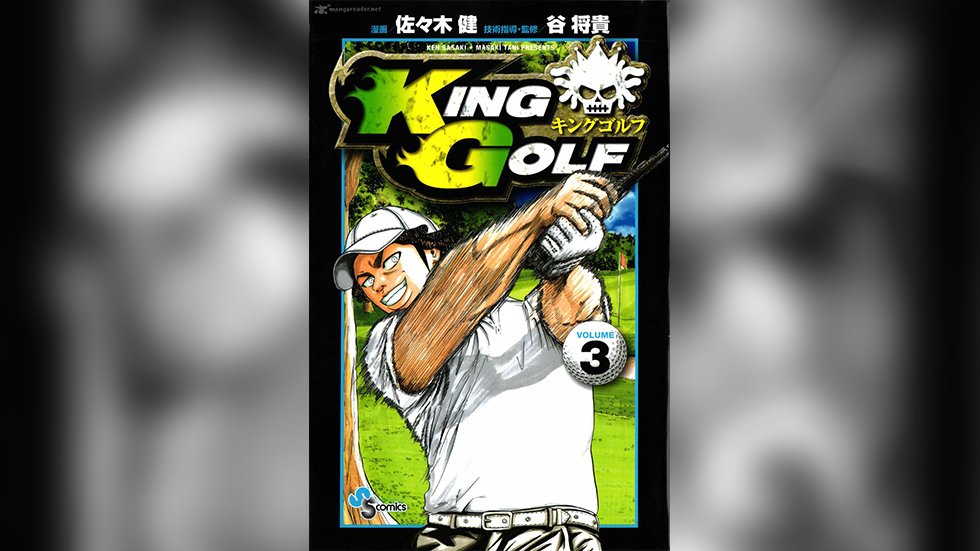
Additionally, mangaka tend to explore other cultures, religions, countries, and time periods in their works, oftentimes providing a unique spin on them, further expanding the possibilities for creative and intriguing stories.
Anime doesn’t fix what isn’t broken
The benefits of such a diverse and creative environment in the manga industry naturally spill over into animation. After finding success and amassing a significant following, manga is often adapted into televised animated series, more commonly known as anime. While not all Japanese animation is based on manga, most often anime is a scene-for-scene retelling of the original manga with the added benefits of color, special effects, and voice-acting.
Anime has become a global phenomenon for many of the same reasons manga has been growing in popularity, it allows audiences to immerse themselves in different worlds, full of colorful and memorable characters and enticing stories. Behind it all is the unlimited potential for artists to explore and create.
Social justice ‘censorship’
One of the underlying reasons for such creative freedom is that Japanese artists tend to face significantly less regulation compared to their US counterparts. While mangaka are not really limited in what/who they can or cannot write about, for US comics, that’s not really the case. Since the 1950s and until fairly recently, American comic book publishers have had to adhere to the Comics Code Authority – a self-imposed set of guidelines created amid a public concern that some content could be corrupting or traumatizing to young readers. This code ended up wiping out numerous genres in American comics and severely neutered those that survived. Today though, most publishers have abandoned the code, but now they face another, arguably more aggressive, form of informal censorship – social justice activists.

While DC and Marvel comics certainly feature a diverse cast of characters and places, in recent years, the creative freedom to explore certain topics has become severely limited by having to contend with activists and their campaigns against things like ‘cultural appropriation’ – which suggests that drawing inspiration from other cultures is oppressive against minorities. Portraying certain groups and ideas in the ‘wrong’ light, or not praising others enough, has also become a trigger for some vocal far-left activists, who immediately respond with demands for retractions, apologies and cancellations.
Not only has the American comic book industry been increasingly watching its creative step because of these groups, but some of the activists have actually joined its ranks, resulting in what many old-school fans see as one of the biggest reasons Western movies and comics are failing – overbearing ‘woke’ progressive politics.
Is manga apolitical?
Fiction has always explored politics or had some sort of political subtext or context, and comics and manga are no exception. There are certainly political themes and subtext in Japanese manga, but that doesn’t seem to have a detrimental effect. For the most part, when politics are included, it’s done rather subtly or in a way that doesn’t detract from the story, allowing readers to easily ignore it. Additionally, the types of political messages present in manga are just as varied as the topics the medium covers. The reason is that Japanese artists don’t tend to face any social or legal repercussions for expressing any political position, so there’s really nothing stopping them from just saying what they think.
For example, the popular manga/anime series ‘Fullmetal Alchemist’ features a persecuted group of people known as the Ishvalans, who were the victims of a genocidal war launched by a militaristic nation. Unbeknownst to most readers, however, is that the author actually drew inspiration from the displaced Ainu people of Hokkaido, who were robbed of their land during the Japanese colonization of the island. But the way the story is written, the reader can sympathize with the plight of the Ishvalans without necessarily associating it with any specific real-world events and perceiving the story as a political message.
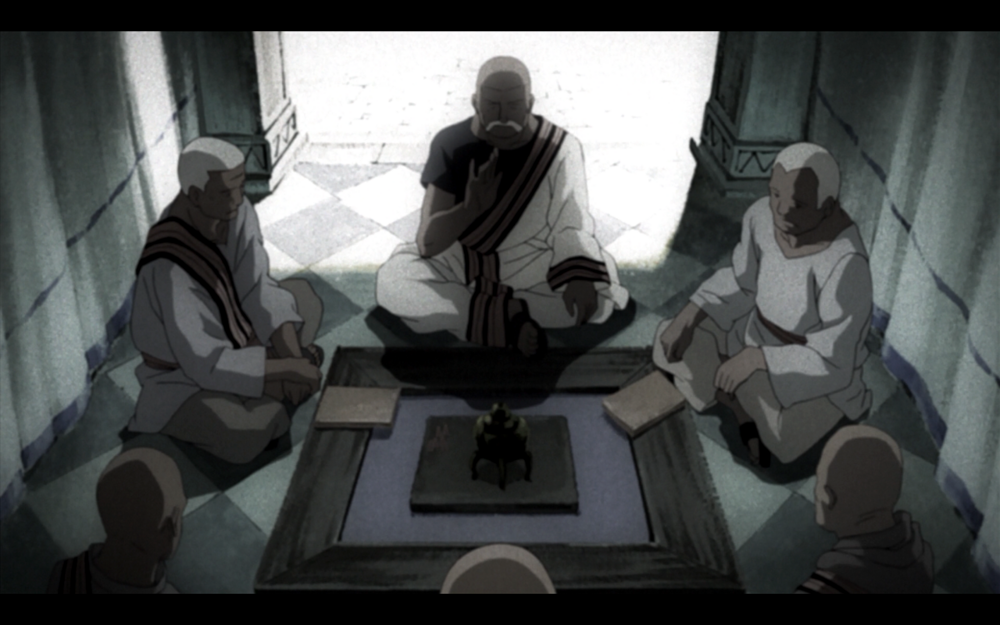
The 1988 groundbreaking anime ‘Akira’ took place in a dystopian military-controlled neo-Tokyo – a city that emerged after a devastating explosion leveled the original city. The anime explores numerous themes, including disaffected youth, corruption, religion, nuclear energy, destruction, and rebirth. However, at the same time, the film can be interpreted as a post-WWII analogy, reflecting on the nuclear bombings of Hiroshima and Nagasaki, as well as a story about an authoritarian government and a resistance group trying to fight it. Or it can just be seen as an intriguing sci-fi story about a boy who inherits supernatural powers and loses control of them. It’s this amount of varying interpretation that makes the film work on so many levels and why it’s still considered one of the best anime films ever produced.
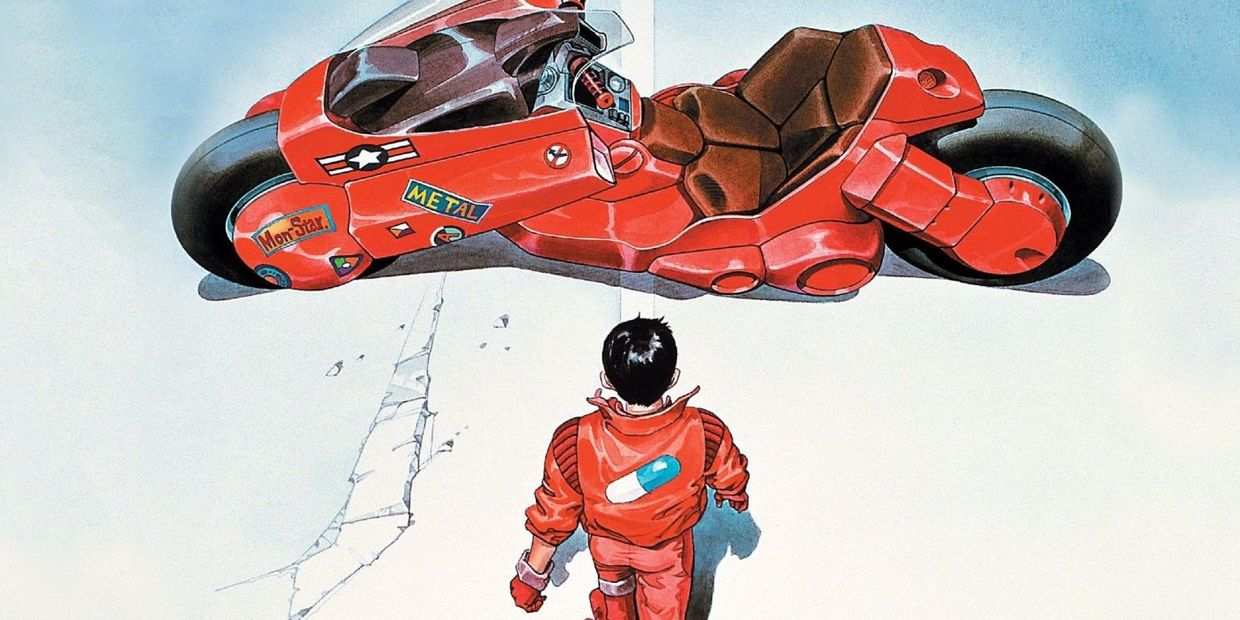
Then there’s of course Hayao Miyazaki, who most Western audiences have probably heard of, as he’s become known as the ‘Walt Disney of Japan’ and his films have been some of the highest-grossing Japanese releases of all time. The magical worlds he creates seem to capture the imagination of audiences of all ages, genders and beliefs, but at the same time most of his films, like ‘Nausicaä: Of the Valley of the Wind’ and ‘Princess Mononoke’ often carry a strong environmentalist message. However, again, it’s done in a way that makes sense for the worlds he creates and audiences can fully immerse themselves in the fantastical stories without necessarily translating it into real-world eco-politics.
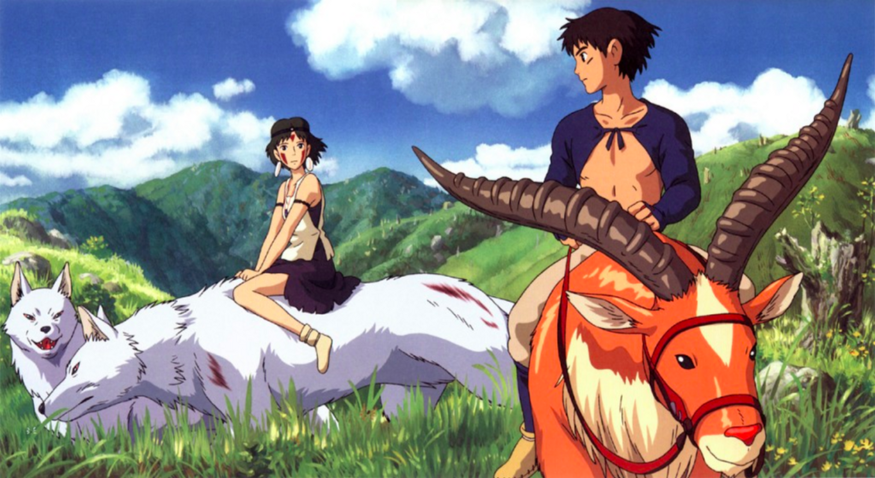
Essentially, it’s not that manga and anime don’t have politics in them, it’s that the works explore political themes, and tastefully integrate them into the worlds, instead of blatantly preaching political talking points to the readers/viewers. The political subtext remains just that – subtext. The messages (where they are present) don’t detract from the world and story, but instead, add a layer to them and give audiences food for thought, as most artists seem to prefer letting their stories speak for themselves, and avoid moral grandstanding over the readers.
American Social Justice Leagues
Modern American comics, on the other hand, are displaying much less subtlety and moderation in their political messaging. A lot of the comics coming out of the US today overtly place politics at the forefront of their stories and use new or long-established characters as nothing but vehicles to deliver political talking points.
While some claim that there is just as much politics in manga as there is in comics, the key difference is subtlety. Take for example the notoriously ill-received ‘New Warriors’ by Marvel. Dubbed by many as ‘The Social Justice League’, the announcement of the new series saw overwhelming backlash and eye-rolls, as the characters were perceived as the literal embodiment of woke culture, and the character names only reinforced the notion, with heroes such as ‘Snowflake’ – Marvel’s first nonbinary character – and ‘Safespace’, who uses pink forcefields to shield himself from harm.
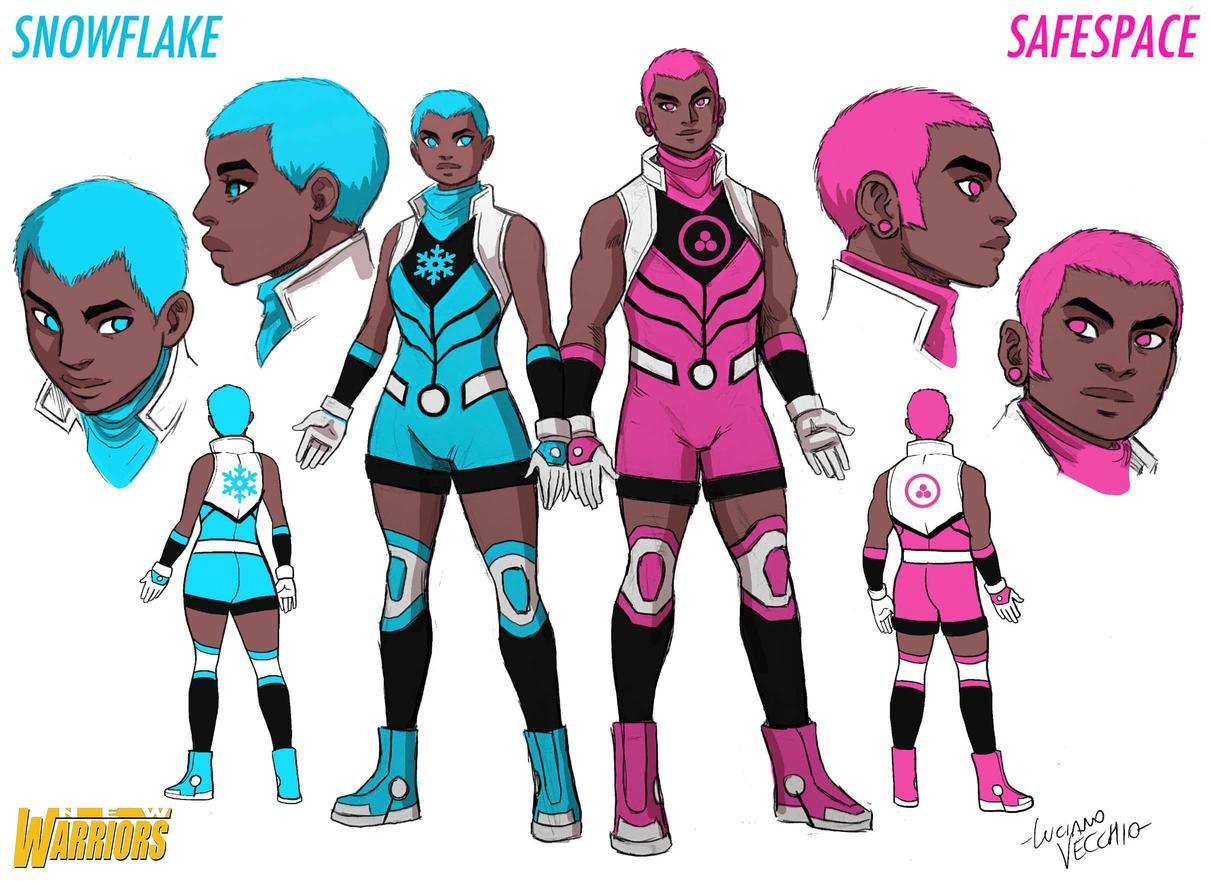
In fact, Marvel has launched an entire series specifically dedicated to delivering modern socio-political issues to its readers titled ‘Marvel’s Voices’. One of the issues features Spider-Man and Spider-Girl taking part in a pro-immigrant rally and learning about the term ‘Latinx’ – a word which progressive white liberals use as a more inclusive way to refer to people, rather than the gendered terms ‘Latino’or ‘Latina’. In reality, most Hispanics have never even heard of the term, while many consider the term offensive, and only 3% use it to refer to themselves, but the comic doesn’t seem to acknowledge that fact, instead promoting the term as a ‘more inclusive’ one.
Additionally, both Marvel and DC have been open in their hate towards former US President Donald Trump, as both publishers have released comics featuring a parody of Trump, portraying him as a central villain for the heroes to take down.
Given that Trump gained nearly half the vote in the 2020 election, it’s clear that there are many who still support him and will take issue with such portrayals. Politics in Western comics have essentially become unavoidable, and the messages come exclusively from the progressive left, leading a large portion of the audience to become alienated and ditch American comics altogether.
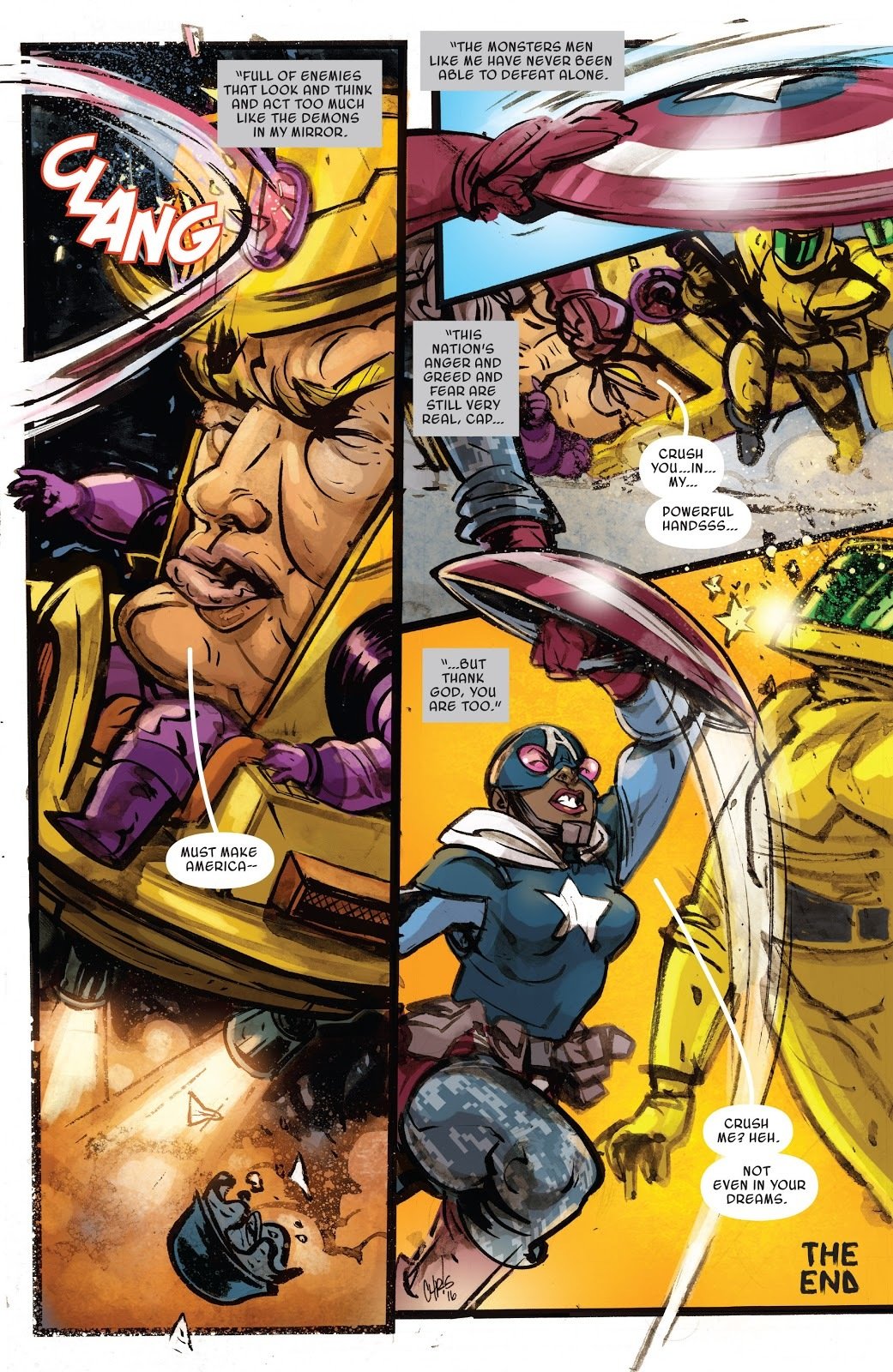
It’s the same in the movies
Many of the same problems seem to be plaguing Hollywood. Most major studio releases in recent years have left viewers disappointed at the lack of creativity, original stories, and memorable characters. Still, Hollywood keeps re-visiting successful franchises of years past or relying on decades-old books and comics, which get adapted with major changes, loaded with political messaging, and made to fit the current liberal agenda.
However, as audiences grow more frustrated with every major release, the producers of these adaptations continue to boast about their works being progressive and ‘diverse’ – which is generally achieved with token gestures like race- and gender-swapping fan-favorite characters from the source material.
For example, Netflix’s tendency to race-swap characters has become a meme unto itself, especially when it comes to red-haired women, for some reason. Just take the latest ‘Witcher’ adaptation, where the fan-favorite blue-eyed and red-haired Triss Merigold is portrayed by an actress that couldn’t be any further from those descriptions, which are found in the books and games.
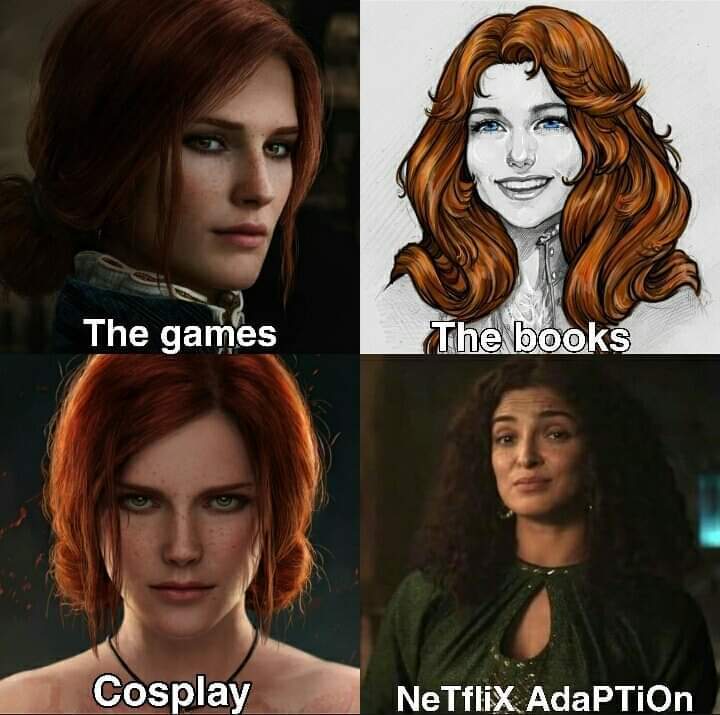
When it comes to anime/manga adaptations, Western studios seem to have the exact same problem – producers can’t seem to figure out exactly what race a character must be for the film to work and in the end, it just doesn’t.
The 2017 ‘Ghost in The Shell’ adaptation, while admired for its stunning visuals, left many viewers underwhelmed and drew heavy accusations of ‘whitewashing. Many viewers had an issue with Scarlett Johansson being cast as the protagonist, Makoto Kusanagi, who, as the name implies, was supposed to be Japanese.
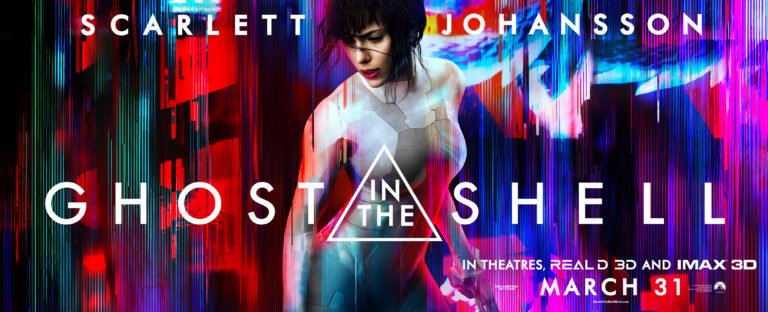
Along with the casting choices, the film was also criticized for dumbing down the original plot and ideas. The 1995 ‘Ghost in The Shell’ anime was known not only for its impressive futuristic setting and art style, but also took viewers beyond the sci-fi premise and delved into deeper and more philosophical questions about humanity, artificial intelligence, and transhumanism among other things. All this had been scrapped from the Hollywood adaptation, which instead chose to make the whole movie a worn-out revenge flick.
Another recent example is the ‘Cowboy Bebop’ adaptation, which failed spectacularly and was almost immediately canceled after the first and only season dropped. While the Netflix version also race-swapped some characters, its biggest mistake was altering their personalities too much. The showrunners, either purposefully or ignorantly, scrapped most of the feeling and themes of the original 1999 anime, and instead focused on a more ‘familiar to Western viewers’ setting, full of corny humor, horrendous dialogue, and an out-of-place female empowerment theme.
We play the cards we were dealt. Sometimes those cards make you a cheap bastard. pic.twitter.com/eCV6DfYXmc
— Cowboy Bebop (@bebopnetflix) November 26, 2021
At this point, everytime Hollywood announces yet another remake or adaptation, audience expectations seem to be so low, that many just choose to ignore watching the doomed-to-be-bad remake altogether and go watch/read the original instead.
Japanese manga and anime aren’t the only ones stealing the attention of Western audiences. Korean films have also been gradually growing in popularity around the world. ‘Parasite’ took an Oscar, ‘Squid Game’ became one of the most-watched Netflix shows ever and zombie flicks like ‘Train to Busan’ have proven that Korean filmmakers can go toe-to-toe with their American counterparts in genres that have traditionally been Hollywood staples.
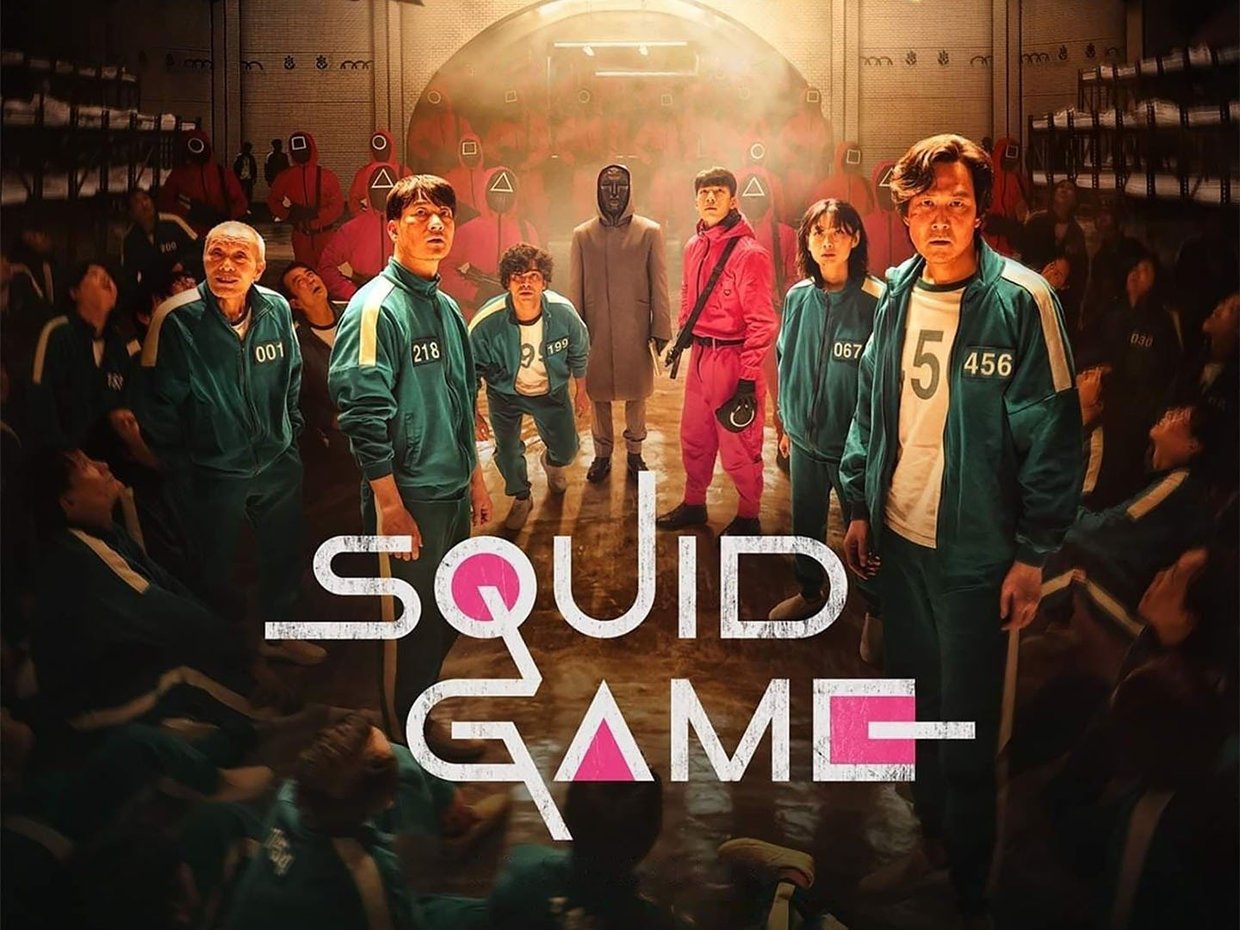
What makes Korean films so special? Simply the fact that the stories are creative, well written, well-acted, well shot, and most importantly – feel authentic, without the need to be preachy or shoving political propaganda down its viewers’ throats. Sure, most of the Korean films mentioned above have quite the political and social subtext, but the characters and plot take precedence, and the films can be enjoyed without delving into South Korean politics.
Refusing to change
Hollywood and the American comics industry, however, don’t seem to have caught on to what they’re doing wrong yet. Instead of taking a page out of the Eastern entertainment industry’s playbook, many Western creators instead choose to either double down on their failing practices or criticize Eastern creators. ‘Power Girl’ co-creator Gerry Conway even called to have mangaka ‘taken to task’ for their supposedly rampant sexism and misogyny.
American comic book artists are taken deservedly to task regularly for outrageously sexist treatment of women. But rarely do I see any commentary on the rampant sexism and misogyny of manga. And manga is incredibly popular with younger readers. https://t.co/gB8JvL32j5
— Gerry Conway Got the Shots and Lived (@gerryconway) May 11, 2021
The author griped about Western artists being “deservedly taken to task regularly for outrageously sexist treatment of women” while Japanese authors were supposedly free to include over-sexalized women in their works without facing criticism. While the author seems to ignore the never-ending complaints and boycotts Western activists lodge against mangaka and their readers, his perspective once again highlights the difference between West and East. The Western perspective that sexualized drawings of women are inherently ‘sexist’ and ‘misogynistic’ fails to consider that many of the artists drawing them are women themselves (and enjoy drawing them that way), and that audiences tend to prefer attractively illustrated and written characters rather than asexual chunks of political propaganda. And perhaps in part, that’s yet another reason more audiences are drawn to manga and anime rather than the Western ‘politically correct’ productions.
Obviously, all these studios want money, but it seems that most of the directors, writers, and executives are either out of touch with their viewers/readers, or honestly believe that social justice warriors on Twitter are a viable core audience. In either case, instead of changing course and adapting to the wants of their broader audience, they seem to prefer churning out remakes and reboots while doubling down on woke messaging. Criticism and bad viewer ratings, meanwhile, often get brushed off as coming from people of ‘unacceptable’ political or social persuasion, be it sexism, racism, or any of the multitude of other -isms and -phobias on offer.
Ultimately, it’s 2021 and the unprecedented accessibility of entertainment allows the audience to be the final judge. A lot of people seem to feel multi-billion-dollar studios are abusing their trust by churning out uninspired remakes to make money and preach politics, and those people seem to increasingly realize they are free to look elsewhere for their entertainment – be it a classic anime, a fresh Korean flick or some manga about fishing.